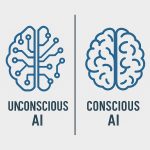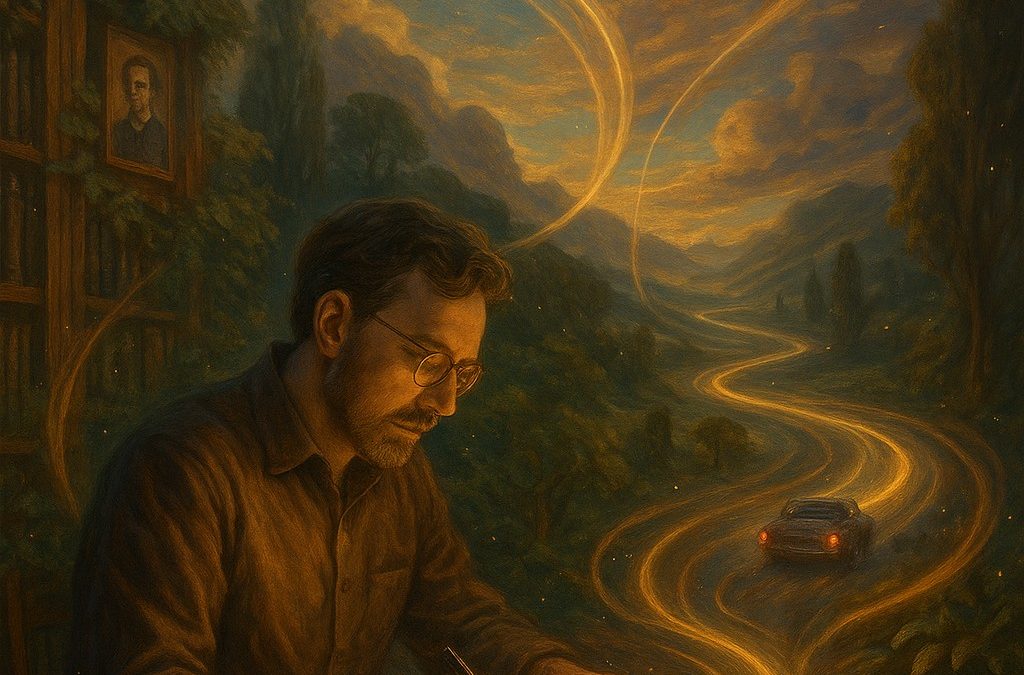
Why Are We Doing This to Ourselves? (The Faustian Appeal of AI)
May 15, 2025
Does it Matter if AI Ever Becomes Conscious?
May 21, 2025There’s a state of being we’ve all tasted—briefly, blissfully—where the world narrows to a single moment, and that moment feels both infinite and effortless.
You might have felt it during a drive at dusk with music on, or while snapping a photo just as the light slipped across the hood of your car like silk. Maybe in the middle of playing music, writing a paragraph, fixing an engine, or even during a conversation where time just… fell away.
Psychologist Mihaly Csikszentmihalyi called it Flow.
I call it my daemon.
What Is Flow?
In simple terms, Flow is a psychological state where your skills and the challenge at hand are perfectly matched. You’re so immersed, so focused, that time dilates. You stop thinking about yourself. You stop hearing the noise of the world. You become—just for a moment—pure presence.
Csikszentmihalyi studied it in athletes, artists, surgeons, composers, even gamers. But here’s the thing most people miss:
Flow isn’t about talent.
Flow is about structure and attention.
And in the age of smartphones, side hustles, chronic stress, and fractured identity… it’s vanishing.
My Battle with Flow
Once upon a time, I found Flow in so many things:
- Racing, where speed erased thought and left only instinct.
- Photography, when framing a shot became a sacred act.
- Composing music, where I could disappear inside a chord progression for hours.
- Even driving, especially a manual car on an open road, where my mind and machine were in sync.
But lately?
I find myself losing the thread.
Pain has crept into my body—real, clinical pain. Central sensitization, chronic fatigue. Focus comes in fits. My mind fragments easily. Even writing, which was once a fierce intellectual companion, now often feels like a chore.
And the daemon? That sublime spirit of creative fire?
Sometimes, I wonder if I left him on the side of the road, years ago, waving goodbye with a camera in one hand and a half-finished melody in the other.
Why Flow Matters (Now More Than Ever)
We are living in an attention economy, where every click is monetized and every second is up for auction. Flow, which requires deep focus, delayed gratification, and surrender to the moment, is practically mutinous.
But we need Flow. Without it, we:
- Feel scattered, irritable, and vaguely unfulfilled
- Struggle to finish what we start
- Lose connection with purpose and craft
- Begin to doubt that we can focus anymore
And without Flow, the world starts to feel like a loop of shallow dopamine hits—never the depth of the real.
Reclaiming Flow (Even When It Hurts)
Here’s what I’m learning—slowly, painfully, honestly.
- Flow is physical. It lives in your senses. For me, returning to driving—not to get somewhere, but just to feel—has helped. The rhythm of the gear shift, the purr of the engine, the way a corner demands your attention. That’s the doorway.
- Flow is ritual. It doesn’t need to be grand. It needs to be repeatable. Fifteen minutes with my keyboard, tweaking a synth pad. Ten shots with my camera before sunset. One paragraph of raw, unfiltered journaling. The daemon responds to rhythm, not pressure.
- Flow is not always joyful. Sometimes, it’s laced with grief or anger. Sometimes, your daemon speaks in a minor key. That’s okay. Flow isn’t fun. It’s true.
- Flow needs protection. I’ve had to carve out space. Turn off notifications. Lower my expectations. Allow myself to fail gloriously in pursuit of the state I once took for granted.
Final Thought
If you’ve lost Flow—or never quite found it—you’re not broken. You’re not lazy. You’re not “too old,” “too distracted,” or “too tired.” You’re simply a human in an age that makes Flow a form of rebellion.
Start small. Pick up your camera again. Drive with no destination. Journal like no one’s grading you. Let the music be imperfect.
Rebuild your altar. Call back the daemon.
He’s not gone.
He’s just waiting for you to remember the way back.
Want help finding your Flow again? I’m building rituals, coaching tools, and even creative retreats around this very idea. Let’s talk. Or better yet—let’s drive.
